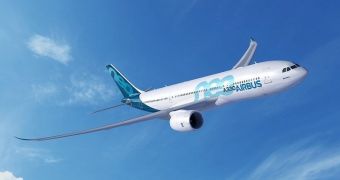It seems like at least half of all movies shot by Hollywood in the past two or three years have been in 3D, with no signs of letting up. Indeed, it is likely that they will all be recorded in that format before long. Given all this, it is not so shocking that even airplanes are adopting 3D panels.
It's not so hard to live through a plane ride when you're just crossing from one end of the state or country to the other. It's not that hard to live through a flight from, say, Athens to Budapest either.
Things get hazy when the flight extends over a period of more than five hours, though. And some go a fair bit longer than that, especially cross-Atlantic ones.
That's why the airplanes used for such extended travel have some sort of displays you can watch movies on, as well as a headset you can plug into the sound jack on your seat arm.
The quality has never been the best, but it hasn't been bad either. It's not like anyone expects full HD quality or 40-inch screens on a plane ride. Unless you're traveling first class on a really fancy plane, or a private jet, but even those have space limitations.
And yet, Airbus decided it would include 3D support anyway. Its latest plane, the A330neo, is a wide body aircraft with an upgraded in-flight entertainment system that will enable viewing of 3D movies.
Just think, next time you buy a ticket you'll be asked if you want 3D glasses to be included in the price. Alas, we're not sure if you'll be able to use the ones you may or may not have picked up from your closest cinema. Probably not, knowing how capitalism tends to make these things go.
The Boeing 787 Dreamlines will have 3D screens as well, plus mood lighting control and, of course, Internet access. As far as means of controlling wireless band interference goes, it's not that bad a tactic at all.
It is quite amusing, in a way, that the Airbus A330neo is gaining fame for 3D display technology when its other assets should be so much more important: up to 14% more efficient fuel consumption per seat and 400 more nautical miles in distance range (thanks to the variation of A350 XWB winglets and Rolls-Royce Trent 7000 engines). Then again, irony does seem to be a sort of law of life.

 14 DAY TRIAL //
14 DAY TRIAL //